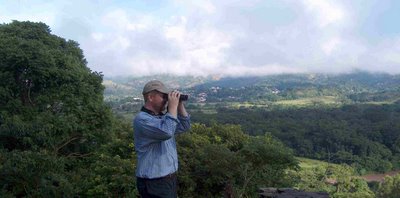Sometimes we birders take ourselves too seriously. Perhaps if Weird Al were to present at the next ABA conference in Quito, Ecuador, he might parody us with something like this (below). With warmest regards and respect for the master, shake it with Al and Donny now! If you need a reminder of how the tune goes, and want to see Donny as a backup dancer, check it out here.
Uptight N Birdy!
They see me birdin’
With my bins on
I know they’re all thinking I’m uptight and birdy
Think I’m just uptight and birdy
Think I’m just uptight and birdy
Can’t you see I’m uptight and birdy?
Look at me, I’m uptight and birdy
I wanna roll with
The gangstas
But so far they all think I’m uptight and birdy
Think I’m just uptight and birdy
Think I’m just uptight and birdy
I’m just uptight and birdy.
Really really uptight and birdy.
I count all the birds that I can see
Audubon member since I was three
Sibley and Kaufman are the guys for me
What you lookin’ at, a chickadee?
I don’t use playback, to the contrary
Using tapes in the field makes birds too wary
Empids and jaegers, to me ain’t scary
Got Pete Dunne’s books in my library
I blog all day when I’m not birding
Sprint through big days like they was races
Been to a million hot birding places
You see me at all the rare bird chases
I’ll drive all night, then bird for three straight days
I know ten thousand birds, and all their ways
I can find all the regulars, and most of the strays
The way I pish up vagrants, you’d be amazed
I’ll stare at hawks all day in the sun
Til my eyes are bleary, just for fun
I don’t give up when the day is done
I spotlight nightjars, I’ve seen a ton
Short-eared Owl is my favorite bird song
I could band jays and warblers all the day long
I’ll ID any bird that you can bring on
Separate Semis and Leasts from across a big pond
They see me birdin’
With my Swarovskis
I know in my heart they think I’m uptight and birdy
Think I’m just uptight and birdy
Think I’m just uptight and birdy
Can’t you see I’m uptight and birdy
Look at me, I’m uptight and birdy
I’d like to roll with
The gangstas
Although it’s apparent I’m too uptight and birdy
Think I’m just uptight and birdy
Think I’m just uptight and birdy
I’m just uptight and birdy
How’d I get so uptight and birdy…
Dunno what this is about? Start here...
To understand where that came from, you probably have to start here...
Or not!
Rock’n’rollers
43 minutes ago














